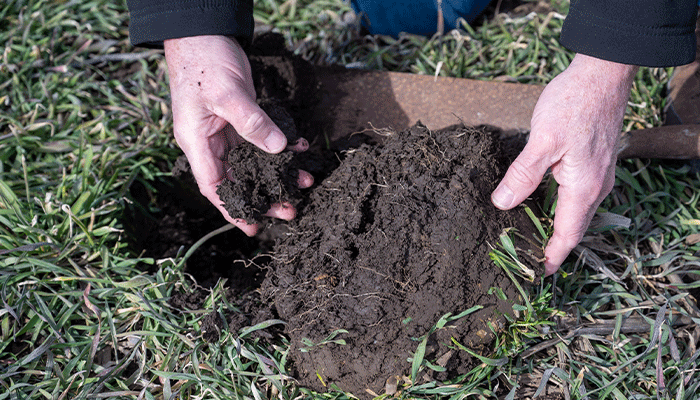Conservation practices paying off in NE Iowa
Author
Published
4/3/2023
A couple miles from his house, the first shoots of cereal rye are showing up in Jack Boyer’s fields, on the Tama County-Black Hawk County line east of Reinbeck. It is an early green carpet that is paying dividends for his operation.
For more than a decade, Boyer has been using no-till and cover crops on all his acres.
“At times when costs are high, I’m able to save on some of my input costs,” Boyer said. “That’s better security in tough economic times.”
Cover crops’ ability to hold onto nitrogen, releasing it over time, is a well-known benefit of the practice. Boyer noted he has also been able to eliminate one pass of herbicide on his soybeans in the spring due to the green cover crop suppressing weed pressure.
“I like to do my analysis on net dollars per acre, not bushels,” he said. “So if I use less nitrogen and lose some yield, the question becomes would those extra bushels have paid for the cost of applying more nitrogen?”
Many of Boyer’s fields are planted to seed corn each year. He found that after starting to use cover crops, he avoided some of the disease pressures associated with corn-on-corn acres.
“My fields are more resilient to drought and stress,” he said. “And in a wet year, I’m able to get out into the fields a couple of days before my neighbors.”
Engineering background
A few years ago, Boyer retired from John Deere after 40 years as an engineer at the company’s Waterloo facility.
He said his science and engineering background helps him test and quantify the value of conservation efforts on his land.
“I really enjoy learning and being able to share what I’ve learned,” he said.
One of his latest efforts is the development of a demonstration plot on acres he recently purchased that haven’t been put into cover crop yet.
“I’m working with NRCS (Natural Resources Conservation Service, part of the U.S. Department of Agriculture) on that,” Boyer said. “We want to see how soil changes over time.”
Regional recognition
In February, Boyer was named the 2022 Hugh Hammond Bennett Regional Producer of the Year by the National Association of Conservation Districts for his efforts.
“Jack is a true leader in conservation and water quality work. He is always learning, trying to improve his operation and increase soil health on his land,” said John Whitaker, executive director of the Conservation Districts of Iowa (CDI) organization, who nominated Boyer for the award. “During my time at CDI, I have watched Jack take the lead on soil health issues. His operation is truly remarkable in the number of ways he improves the soil and protects the water that leaves his farm.”
Boyer serves on the CDI Board, as well as the Tama County Soil and Water District Committee and the board of Practical Farmers of Iowa (PFI).
While the recognition is always nice, Boyer is focused on teaching others what he’s learned.
“I’m always happy to share with others, but everything I share is my experience, and I know it won’t work on every farm,” Boyer said. “I encourage anyone who wants to, to start small. Learn how these practices work on your operation. I believe you’ll be successful; I believe it will help your bottom line.”

(Pictured above: Soil structure and soil health has been invaluable in Boyer’s fields, where he has found field maintenance and disease control are aided by his conservation efforts.) PHOTO / CONRAD SCHMIDT
Want more news on this topic? Farm Bureau members may subscribe for a free email news service, featuring the farm and rural topics that interest them most!